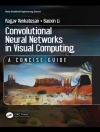Sol-Gel Processing for Conventional and Alternative Energy is a comprehensive source of information on the use of sol-gel processing in materials in energy systems, conversion, storage, and generation. The volume editors include numerous applications, primarily in nuclear fuel processing, electrolytes for fuel cells, and dye-sensitized solar cells (DSSC).
In addition to examining contemporary processing, properties, and industrial applications, ‘Sol-Gel Processing for Conventional and Alternative Energy’ identifies materials challenges presented by conventional and alternative energy generation that require new materials and innovative processing. Each chapter is written by an internationally respected researcher. The book provides a state-of-the-art treatment of different aspects of materials for energy production, with a focus on processing, and covers related topics such as carbon sequestration, clean energy, and biofuels.
Tabla de materias
Overview of conventional energy sources and alternative energy sources.- Energy conversion and energy storage nanoarchitectures.- Energy Conversion.- Batteries and Energy Storage.- Photovoltaics.- Carbon Dioxide Sequestration.- Catalysts for biofuels.- Photocatalysts.- Electrochromics.- Electrodes in Electrochemical Cells.- Thermoelectrics.- Ferroelectrics.- Heat exchangers.- Energy conservation through solid state lighting.- Hydrogen storage in porous materials.- Nuclear Fuels.
Sobre el autor
Dr. Lisa C. Klein is founder and first editor-in-chief of Springer’s highly successful Sol Gel journal. Lisa also started the Sol Gel Book Series but due to other University activities and visiting position, had to reduce her involvement with the journal and Series. She is a leader in this field with good contacts. In 1998 Lisa received the Achievement Award of the Society of Women Engineers for ‘breakthrough contributions in sol-gel science and engineering, particularly sol-gel applications in electrolytes, electrochromics, membranes and nanocomposites’.
Dr. Mario Aparicio completed his Ph D in 1998 at the Universidad Autonoma de Madrid, Spain. In 1999, he was awarded a 2-year fellowship from Minsterio de Educacio y Cultura to study hybrid proton exchange membranes at Rutgers University, Piscataway, NJ. Presently, he is a researcher in the Institute de Ceramic y Vidris, CSIC, Madrid, where he continues to develop PEM membranes and sol-gel corrosion coatings.
Dr. Andrei Jitianu completed his Ph D in 2001 at the University of Bucharest, Roumania. He studied materials chemistry, mainly focusing on sol-gel processes. In 2007, he joined City University of New York. He has experience with sol-gel inorganic-organic hybrids for a variety of applications. In 2010 he received the Feliks Gross Endowment Award, as one of only two junior faculty selected for their research excellence from the Graduate Center of the entire City University of New York.












